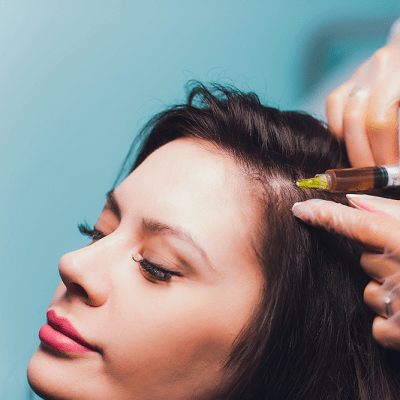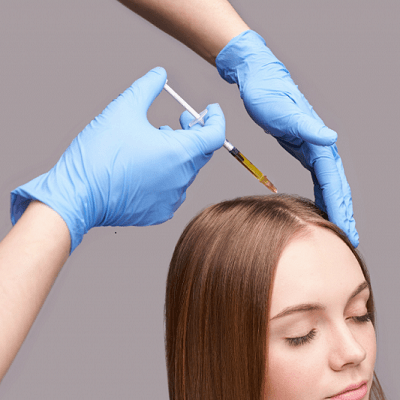
PRP hair restoration is gradually becoming one of the most common methods for restoring beautiful locks and encouraging hair growth. One of the most asked concerns about PRP therapy is how long it takes to work and when a patient will see apparent improvements.
How quickly does PRP work?
Within two to three months, you will notice an increase in hair volume.
You should be pleased with the effects of PRP therapy within six months to a year. Just remember that you will need to return for follow-up treatments to keep your lush, thick locks.
Continue reading to discover more about the PRP hair growth treatment results and how you may attain healthier-looking hair while regaining confidence.
What Is the Process of PRP Hair therapy?
This novel technique stimulates hair growth by using your blood. PRP includes all growth proteins, and cytokines demonstrated to promote and improve follicle activity. Remember that hair loss is caused by the follicle contracting until it produces either thin and short hair or no hair at all.
This therapy helps to strengthen the weakened follicles. A tiny amount of your blood will be drawn and spun in a centrifuge. Once the PRP has been composed of the sample, short, shallow injections will be administered into the skin at the same level as the hair follicle to ensure that it reaches the exact location required to maximize outcomes.
What You Can Expect:
You and your doctor will have a thorough discussion. The doctor will evaluate your scalp to see if you are a good candidate for PRP hair treatment. You and your doctor will go through the treatment plan and establish reasonable expectations. The significant aspect of this efficient treatment is the tiny chance of severe side effects due to the use of your blood. It is why so many people tolerate PRP hair loss treatment in Dubai so well.
Pre-Treatment:
There are a few pre-treatment tips to take to make the most of your session and reduce the already minimal probability of bruising at the injection site. Stop using any blood-thinning over-the-counter drugs or herbal supplements a week before your visit. It includes the following:
- Aspirin.
- Ibuprofen.
- Naproxen.
- Garlic.
- Vitamin E.
- Omega-3.
The Day of Your Consultation:
When you come, your doctor may administer a topical numbing cream to the injection site; however, many customers do not receive this and yet report that the therapy is comfortable. Your blood will be drawn and spun in a medical-grade spinner to extract the plasma from the rest of the blood. This non-surgical, in-office procedure takes around 30 minutes. When you’re finished, you’re free to leave.
Post-Treatment:
This procedure does not need any downtime. You can shower, shampoo, and condition generally after you get home. Inquire with your doctor about any harsh chemical treatments, such as hair color, and how long you should wait before undergoing them.
Results:
The outcomes are not instantaneous. Remember that the development period for new hair to grow from the follicle out of the skin is three months. Thus longer hair will take much longer to change your appearance. Results will be seen six to twelve months following your initial treatment.
Some customers may get the desired effects immediately after the first PRP therapy session. The doctor will propose a treatment plan for you based on the health of your hair and how much you need it to grow back. The best outcomes are obtained by repeating treatments once a month for three months. Most clients come once or twice a year to keep the results they like.
Improve and Extend Your Results:
PRP hair treatment can be used with at-home therapies recommended by your doctor. Excellent topical therapies are available, which are enhanced after a customer has undergone PRP hair treatment.
How Long Do Treatment Results Last?
Recognizing and addressing the source of your hair loss is critical to preserving the outcomes of PRP restoration treatments. If the underlying reason for the hair loss is not identified and treated, you will continue to have localized hair loss in some areas of your scalp. PRP cannot cure androgenetic alopecia or other hair loss; it can only treat them.
If your hair loss was induced by stress or the use of certain drugs, it is suggested that you have follow-up treatments once or twice a year to preserve your results. While PRP treatment for hair growth is still in its infancy in a medical study, data shows that treatment outcomes can continue for years if the underlying cause of hair loss is treated.
Conclusion!
Please schedule an appointment with a hair specialist in Dubai to learn more about PRP therapy and to see whether you’re a good candidate for it. They will analyze your medical history, family medical history, and lifestyle to decide if PRP therapy is the right option for treating your hair loss during this appointment.











